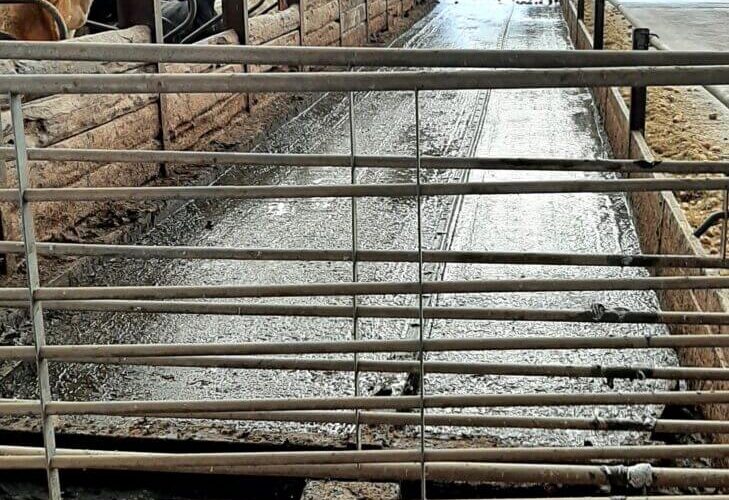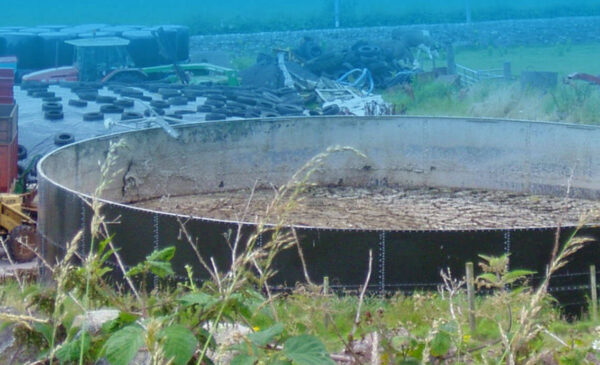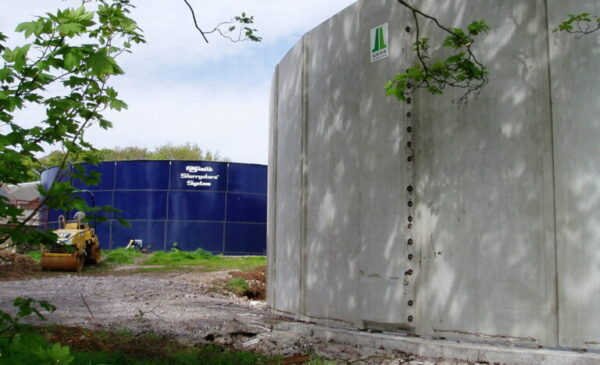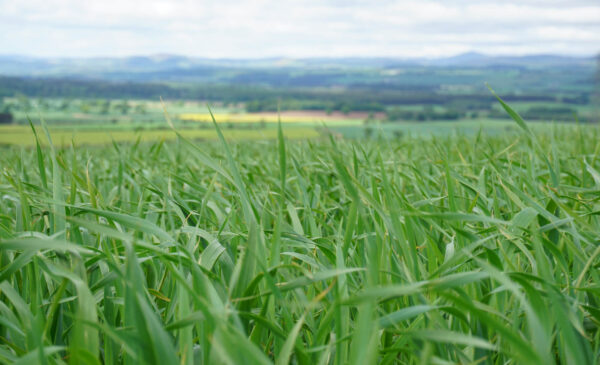Slurry comprises of manure and water, containing valuable nutrients, which can, when used appropriately be spread to land and reduce reliance on bagged fertiliser. However, it can be a highly polluting material if not managed, stored and spread appropriately.
Various areas around the steading can pose several pollution risks. Keeping water from clean and dirty areas around the steading separate can considerably reduce the amount of contaminated water you need to collect, handle, store and spread.
Further information
- See the handy checklist for managing dirty water around the steading.
- Review helpful information from Teagasc (Irish Agriculture and Food Development Authority) on yard management to protect water quality.
More farmers are looking at dewatering technology, separating livestock slurry to give a solid and a liquid fraction. This approach can help in terms of slurry handling and storage, however, research suggests that this could give rise to increased emissions of ammonia during storage due to heightened emissions from the solid fraction and has implications for emissions to air.
There are a number of different slurry separation systems that can be used depending on slurry type, volume, available budget and what you are looking to achieve. These include:
- Mechanical separators – mainly use presses (rollers, belts, screws or filters) de-watering using mechanical pressure.
- Screens (stationary, inclined, rotating or conveyor types) that de-water by gravity, pressure or vibration. Some systems can be trailer mounted making them mobile.
Keeping clean and dirty water separate around the steading can reduce the amount of water you need to collect store, handle and spread. The 4 Point Plan outlines some ideas for consideration.
Alongside reducing emissions, using an impermeable cover to prevent rainfall entering the slurry store can also leave more space for slurry storage; see section on slurry store covers for more information.
Roofing the midden, or covering the midden using sheeting could also act as a barrier to water ingress, again reducing the amount of runoff generated by the midden. Rain driven runoff from a yard midden can also be treated via a constructed farm wetland.
Some farmers across Scotland are already successfully covering slurry stores and middens as part of their slurry management system.
Further information
- Review ideas to reduce dirty water production around the steading
- See the Know the Rules Factsheet 5 – Constructed Farm Wetlands
- Considering a Constructed Farm Wetland? Review the CFW Design manual
Less emissions to air, enhanced nutrient availability, improved slurry consistency with less crust development and reduced odours are all claims made by companies selling slurry additives or alternative slurry treatments. A range of slurry treatments are available, depending on what you are looking to achieve.
- Slurry separation – this method mechanically separates the liquid from the solid fraction within slurry. The resulting liquid can be easier to apply, this can help to reduce volumes of slurry to store, whereas the solid fraction can be stacked, transported or composted. Slurry separation has been found to result in increased emissions of ammonia during storage due to heightened emissions from the solid fraction if it is not applied immediately to land and stored without being covered, as this begins to compost and release emissions to air.
- Slurry aeration – Compressed air is injected into the slurry in defined areas via non-return valves. The action of the bubble rising to the surface physically agitates the slurry and prevents crust formation at the slurry surface, reducing the need for agitation pre use. However, the action of continued aeration and disturbance could increase ammonia losses to air from stored slurry.
- Anaerobic digestion – slurry or slurry in combination with other feedstocks is used to generate biomethane or biogas via an Anaerobic Digestion (AD) plant. AD systems can be at an industrial or micro scale. The digestion process kills faecal bacterial and offers another way to treat slurry. The bioavailability of nitrogen to the growing crop is increased in the resulting digestate.
- Slurry additives – Slurry additives contain a mixture of enzymes and bacteria, which are added to the slurry. The enzymes and bacteria break down fibrous material, reducing crust formation and can make nutrients in slurry more bioavailable when applied to the growing crop. The use of additives can make slurry easier to handle and spread. There are a range of slurry additives on the market, subject to what you are looking to achieve.
- Acidification – Sulphuric acid is added to slurry to reduce the pH from about 7 to between 5 and 6. When the pH is less than 6, the chemical reaction stops and ammonia is changed to ammonium, which doesn’t evaporate, holding it in the slurry. Slurry is typically pumped to a processing tank, where sulphuric or nitric acid is added, before being pumped into a storage tank for land spreading. These systems are better to install at build stage rather than retrofit. Alternatively, slurry can be acidified at time of spreading through a tractor mounted system. Although not widely adopted in Scotland, slurry acidification is proven to reduce ammonia emissions by over 90%.
Further information
- Read the FAS Article – Why invest in a slurry separator.
- Read the AFBI evaluation of mechanical slurry separation.
- Thinking of using digestate? See the resources on Digestate use on Scottish Farms.
Extreme care must be taken when mixing slurry, especially where this is in an enclosed space such as collected under slatted tank systems.
Do not underestimate the risks when working with slurry
Slurry systems can generate lethal gas, notably hydrogen sulphide, which has been responsible for a number of deaths on farms. Even for those experienced in working with slurry, please review health and safety guidance in links below.
‘Slurry gas’ is a mixture of gases including methane, carbon dioxide, ammonia and hydrogen sulphide, all produced by bacteria during the decomposition process. Hydrogen sulphide is colourless and odourless, making it difficult to detect. Hydrogen sulphide is responsible for several deaths and the loss of livestock on farms across the UK each year. 
The presence of these odourless and poisonous gases, particularly from tanks within buildings during mixing of slurry must be emphasised. The highest concentrations are released when slurry is first mixed; one reason for the high number of deaths is due to people going into help someone who has collapsed and then also succumbing to the gas. In slatted courts, all livestock housed over the slats should be removed and the building well-ventilated prior to and during slurry agitation.
For the safety of those working on farms with slurry, a gas concentration meter is advised. Handheld monitors are readily available and can, if properly maintained and calibrated, provide an additional safety precaution.
If possible, avoid the storage of silage effluent and slurry in the same tank at the same time as this can increase the risk of poisonous gases being formed.
Further information
- Download the HSE leaflet Managing Slurry on Farms.
- Read the Safety when working with slurry
- Read the FAS article Beware Slurry Gases.
With a slurry store holding such a concentration of valuable nutrients, and huge potential repercussions should something go wrong, regular inspection and maintenance of slurry stores, whether towers, lagoons or slatted stores is crucial.
The structural integrity of the store must be maintained and so the area around the store should be kept clear of soil, debris and vegetation, to allow for easy inspection and identification of any defects or leakage. Trees and shrubs should not be allowed to set down roots in proximity of the store. It is common for manufacturers to provide recommendations for maintenance over the lifetime of the store.
In addition to maintenance of the area around a slurry store, metal towers can experience corrosion along the joints of the store. Degradation of the mastic between store sheets can lead to failure, resulting in splitting and a spill. In a similar manner, cracks in concrete can indicate potential leakage points and should be investigated to avoid serious environmental damage. Storage systems should be carefully inspected for any signs of surface corrosion, cracking of concrete or fractured pipes.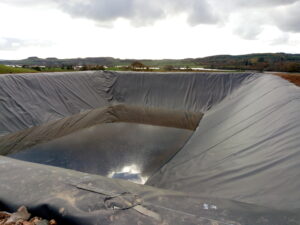
All slurry lagoon liners should be assessed annually when the store is empty, and repairs made before renewed winter use. If you have a leak detection system it should be regularly inspected to ensure that all chambers and pipes are kept clear and functional. The leak detection must not be connected to the field tile drainage system, it should be to an enclosed sump or chamber. All outlets should be routinely checked, and all valves greased annually, following the emptying of the store. Earthbanks should also be checked for any subsidence. Finally, a robust pest control plan on the farm will limit the potential harm cause for the store from rodents and other burrowing mammals.
Regular checks of storage and associated pipe work should be undertaken, with internal inspections of structures annually as tanks are emptied. Note that slurry gases can kill and adequate health and safety precautions must be taken when working with slurry, especially in enclosed spaces – see section on mixing slurry.
Further information
- Read the Know the Rules Factsheet 2 – Maintaining Slurry storage systems.
- Read the HSE leaflet Managing Slurry on Farms.
If you are planning to install a new slurry storage system or substantially reconstruct or enlarge any existing system you must consult with a suitably qualified engineer, have an engineering plan available for the proposed works and retain the engineers final sign-off certificate for the works for the life of the structure. It may also be worth checking with your local council in terms of any planning restrictions.
Farmers planning a new slurry store or silage structure on the farm, or significantly altering an existing silage or slurry structure, must notify SEPA 30 days prior to starting any development work.
Further information
- Read the Know the Rules Factsheet 1 – Slurry and manure storage and Factsheet 2 – Maintaining slurry storage systems.
- Download this form to notify SEPA of new/substantially enlarged slurry system.
- Watch the webinar series ‘Managing slurry for folks in a hurry’.

